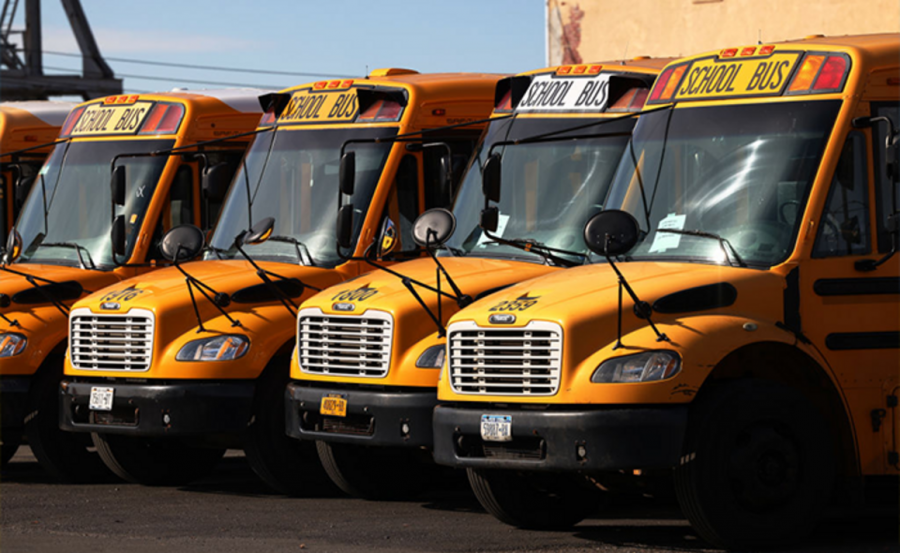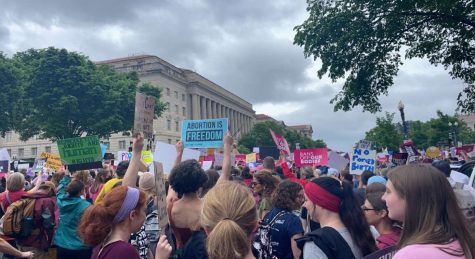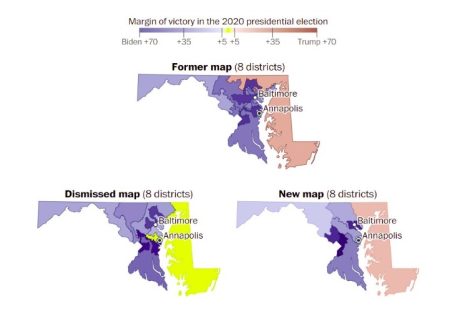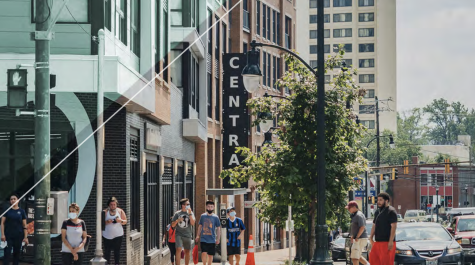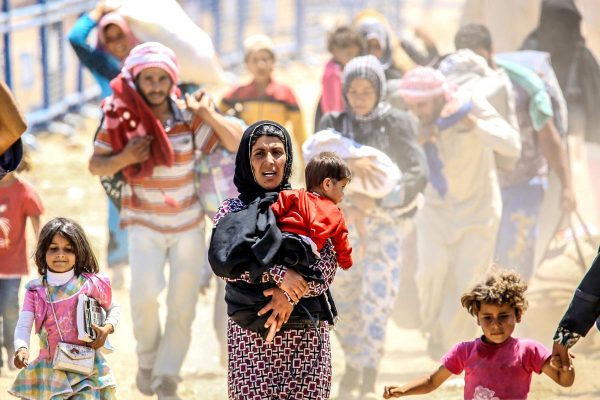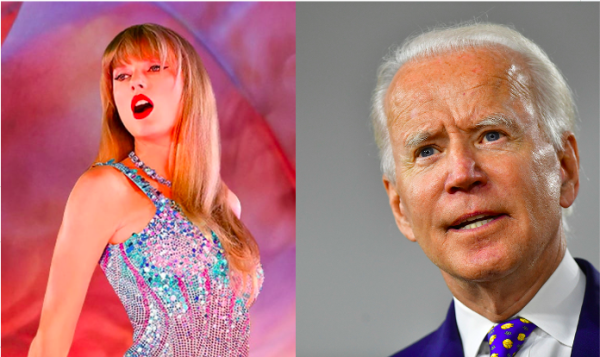School bus drivers amid the pandemic: Strains, shortages, and strikes
It is the general consensus among the American public that children belong at school. The benefits are seemingly endless: receiving an education, being safe and protected, and acquiring the skills necessary for success and prosperity in the future. Yet so often it is taken for granted that children are able to get to school at all; it is so ingrained in the routines of most American school children and their families that the bus will pick them up from their streetcorner in the morning, deposit them at school, and drop them home again in the afternoon. But what are the benefits for the bus drivers? And what would happen if they disrupted this commonplace routine of transporting children to and from school? These were the very questions that school bus drivers and their respective school systems around the country found themselves facing in the Fall of 2021 as schools came back in session expecting business as usual from their bus drivers despite being in a world where so much had changed.
According to the Bureau of Labor Statistics, 196,100 people were employed as elementary and secondary school bus drivers as of May 2020. These drivers faced grueling hours, often waking up before the sun had risen and returning home after the sun had set, and the interim consumed by multiple stressful routes which may be packed with unruly children or dangerous, inclement weather. For the year of 2019-2020, the average hourly wage of a school bus driver was only $16.56, barely over minimum wage in some states, and amounting to an average annual wage of $34,450. The benefits received by school bus drivers may be minimal as well; since many school bus drivers are simply contracted workers, they do not receive the benefits standard to school district employees and instead may have to pay for health insurance out of pocket.
The challenges faced by school bus drivers were only increased by the COVID-19 pandemic which struck in March of 2020. As schools shut down, some school bus drivers received significant pay cuts, only earning the non-services portions of their salaries and benefits, but many drivers were furloughed or laid off completely. As Harmony Weinberg, a spokesperson for Edmonds School District in Washington state explained to Bus and Motorcoach News in September of 2020, “Funding for transportation is based on student ridership. When ridership falls, funding falls. And unfortunately, until we can transport students again, funding to pay drivers is not an option.” As schools began to return to in-person offerings in the Fall of 2020, school bus drivers returned to their posts. Yet, this transition back was not without risk. Confined to a small space with many children who were not yet eligible to receive the COVID-19 vaccine, school bus drivers began to contract COVID-19 at a high rate. A study performed by JAMA Internal Medicine identified that buses, enclosed and with poor ventilation, create an environment with a high risk of COVID-19 transmission. This risk was only heightened in states and school districts which did not enforce a mask mandate, leaving the risk of pathogen transmission even greater. According to an informal count led by a Twitter account named School Personnel Lost to Covid, as of December 6, 2021, at least 284 school bus drivers and aides have died due to COVID-19 since August 2020, although the real figure may be far higher. A vast majority of these deaths have occured in states where there is no mask mandate in place for schools.
A year in from a large number of American schools returning to some form of in-person learning, hazardous conditions have remained largely unchanged for school bus drivers. Due to the high risk of the job with little benefit as incentive, many school bus drivers have quit their posts, leading to a national shortage. According to a study performed by the National Association of Pupil Transportation (NATP), the National Association of State Directors of Pupil Transportation Services (NASDPTS), and the National School Transportation Association (NSTA), “Fifty-one percent (51%) of respondents described their driver shortage as ‘severe’ or ‘desperate,’” while “roughly three-quarters of all respondents (78%) also indicated that the school bus driver shortage is getting ‘much worse’ or ‘a little worse.’” In addition, the survey found that, “Roughly two-thirds of all respondents (65%) indicated that bus driver shortage is their number one problem or concern. Only 1% of respondents indicated that bus driver shortage is not a problem for them.”
School bus drivers who have remained working have faced increased workloads, often having to cover multiple routes to make up for missing drivers. Some school districts, desperate for drivers, have been offering everything from covering the costs of commercial driver’s license education to minimal pay increases as a way to entice new drivers and retain veteran ones, yet nothing has remedied the challenges faced by school bus drivers. In protest, school bus drivers all across the country have begun participating in “sick-outs,” during which bus drivers organize to call out sick all at once as a statement to demand higher wages and safer working conditions. The philosophy behind sick-outs is that if all the bus drivers for a school district are out sick, then students have no way to get to school, forcing school districts to negotiate with drivers in order for school to remain in session. Parents, especially those with no other means of getting their children to and from school, would certainly demand whatever change was needed in order to reinstate school bus services so that their children could attend school once again, effectively catalyzing meaningful change within school districts.
The shortage of bus drivers has certainly been felt within Maryland, as multiple school districts have faced route delays, cancellations, and even sick-outs. In Charles County, a sick-out which began on October 22, 2021 and continued for nearly a week saw the disruption of hundreds of routes as dozens of drivers protested in pursuit of higher wages. On October 22, 74 out of 280 buses that typically serve Charles County Public Schools (CCPS) were out of operation, which left 168 of a total of 718 routes without drivers and therefore bus service. According to an October 25 press release from CCPS, “One bus may provide service for up to four schools. Contractors as well as CCPS transportation staff are covering as many routes as possible but are not able to cover every route without an adequate number of bus drivers.” Four days later, on October 29, the Charles County Board of Education allowed CCPS to dole out a one-time bonus of $1000 to active employees of the school system, including its bus drivers. This payout, which will be distributed in two parts, half in November and half at the end of the 2021-2022 school year, effectively put an end to the district’s sick-out.
Howard County also faced a sick-out on November 8, during which around 80 bus drivers called out sick as a statement in pursuit of higher pay. In a communication to parents, Howard County Public Schools System (HCPSS) stated that, “HCPSS does not have its own bus fleet, nor are the bus drivers HCPSS employees,” and that HCPSS had “been working with contractors in recent weeks to enhance incentive pay for drivers for retention and recruitment.” HCPSS bus drivers, who reported not receiving any benefits nor receiving a raise since 2009, were not off of the job for long; before the end of the day, HCPSS offered drivers a $5000 bonus and a commitment to discuss benefits by the end of the school year, prompting drivers to return to their afternoon routes.
Bowen Bus Service driver Diann Withers expressed the frustration of bus drivers to reporters following the November 8 HCPSS sick-out, stating that “There’s nothing appealing to drive a school bus anymore.” Bus driver Sharon Decker, of Bowen Bus Service, who serves HCPSS and participated in the November 8 sick-out, explained to reporters that the drivers “had to take a stand and fight for what we feel like we need and what we deserve.” That is precisely what the school bus driver shortage and subsequent strikes have been about: people who have been long overworked and particularly disadvantaged due to the COVID-19 pandemic now demanding what is right. Bonuses and promises of talks of benefits have quelled the protests of bus drivers in Maryland as in other states around the country. When speaking of the changes that bus drivers have seen in recent weeks, Withers was hopeful for the future treatment of bus drivers, explaining that “We didn’t build Rome in a day. You’ve got to take baby steps here. At least they’re acknowledging us. That was the big thing.”
Hi, my name is Sophia Strocko, and I am currently a senior at Sandy Spring Friends School. This is my third year at Sandy Spring and third year on Wildezine....

